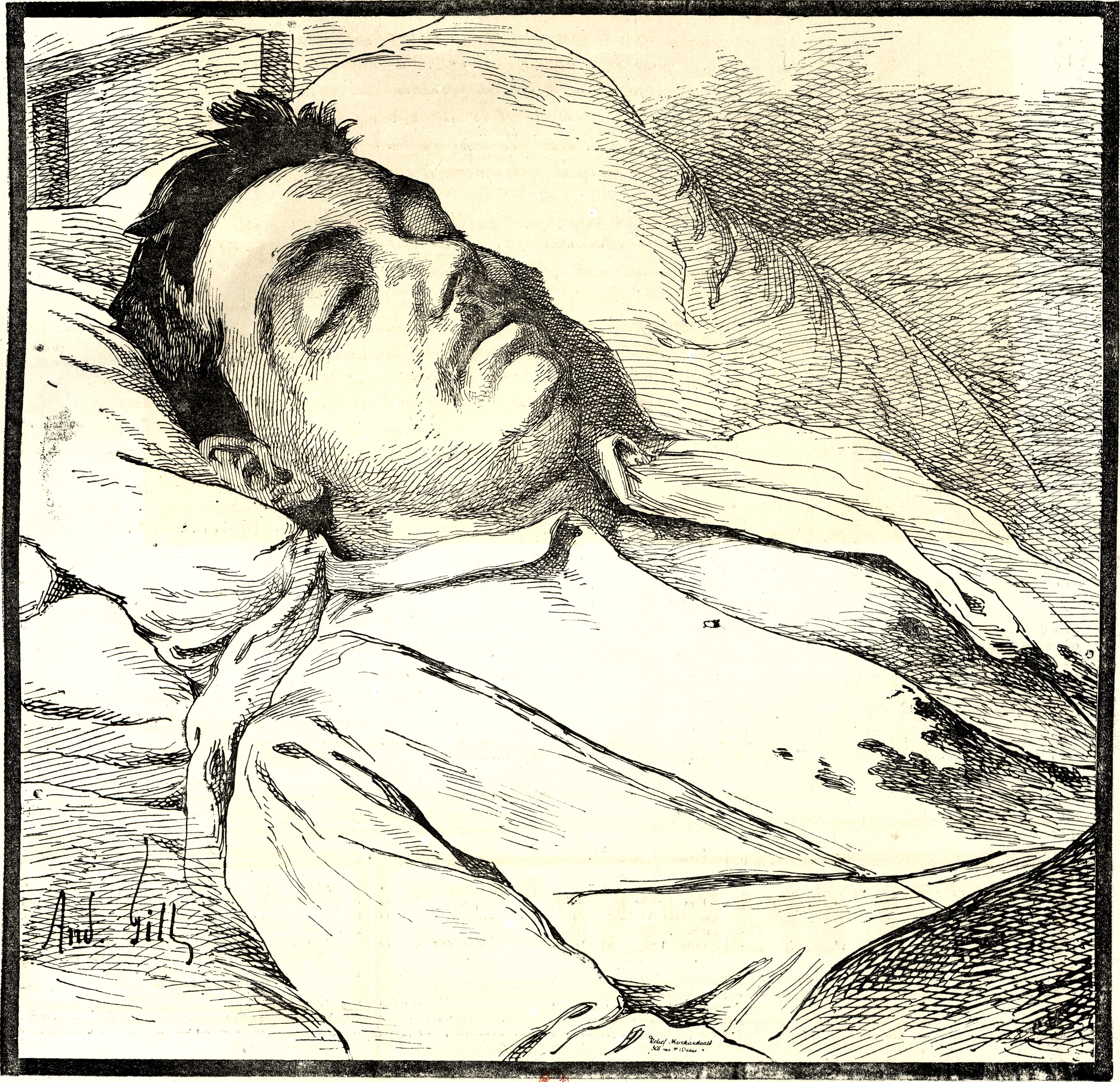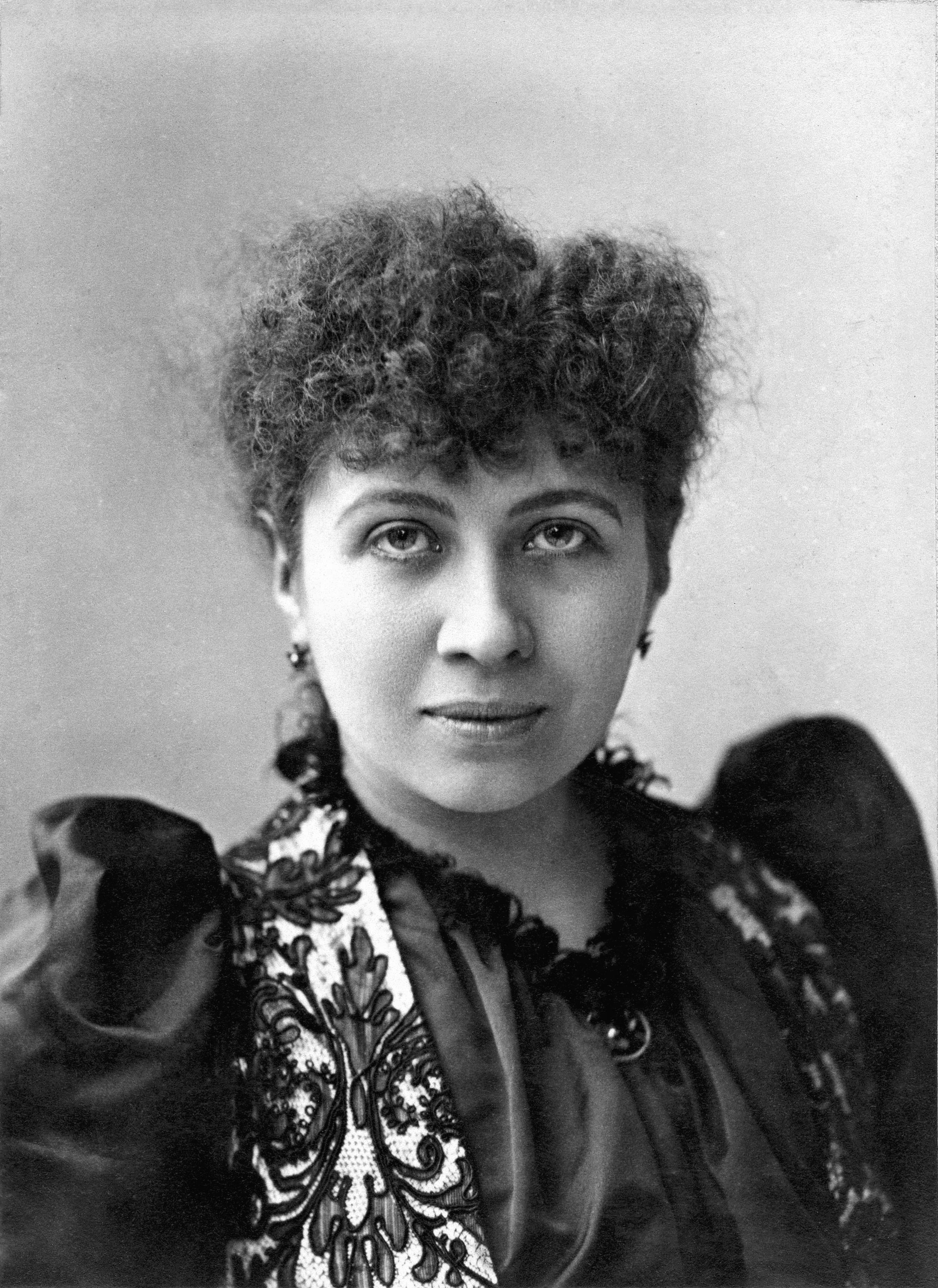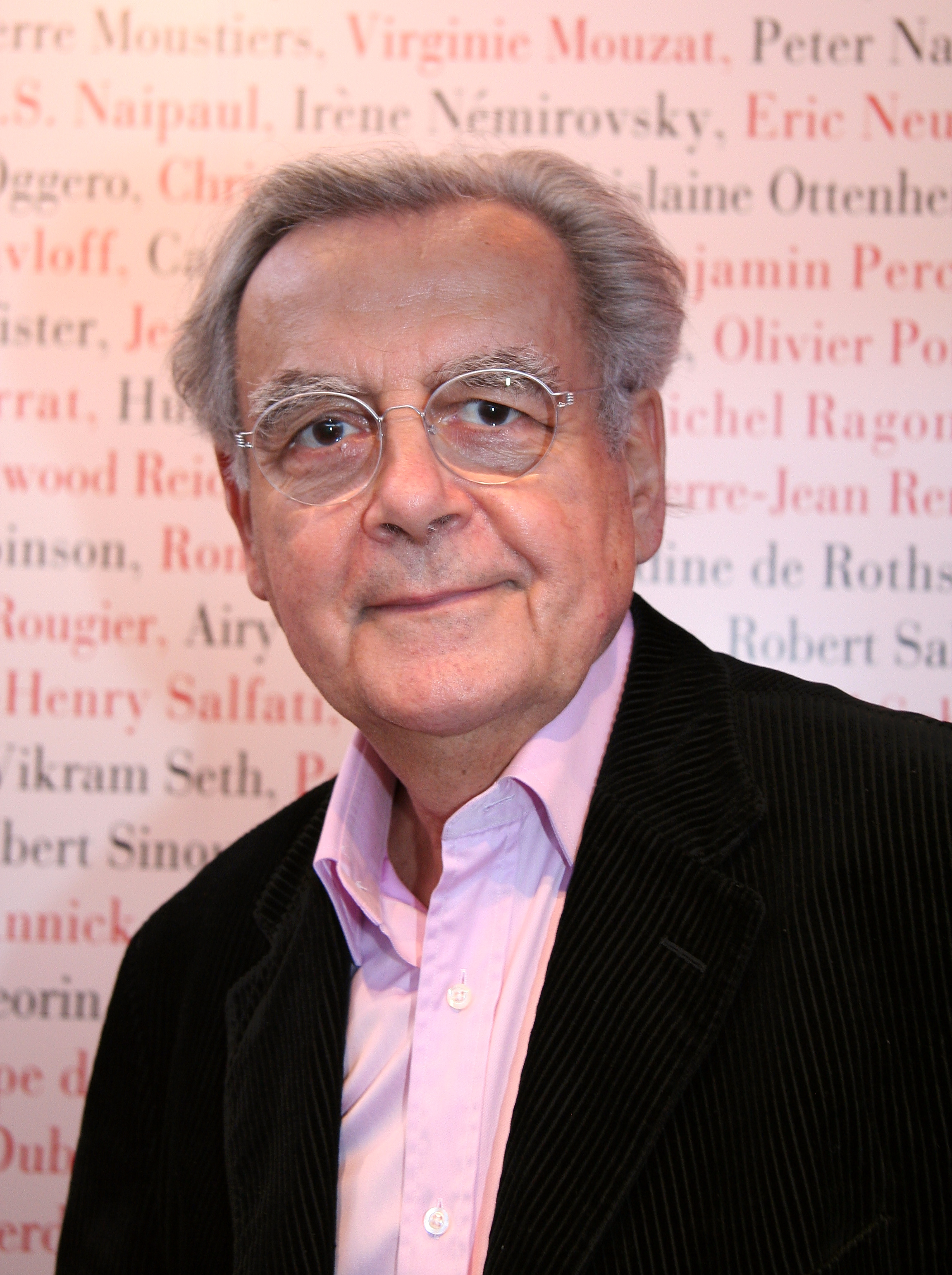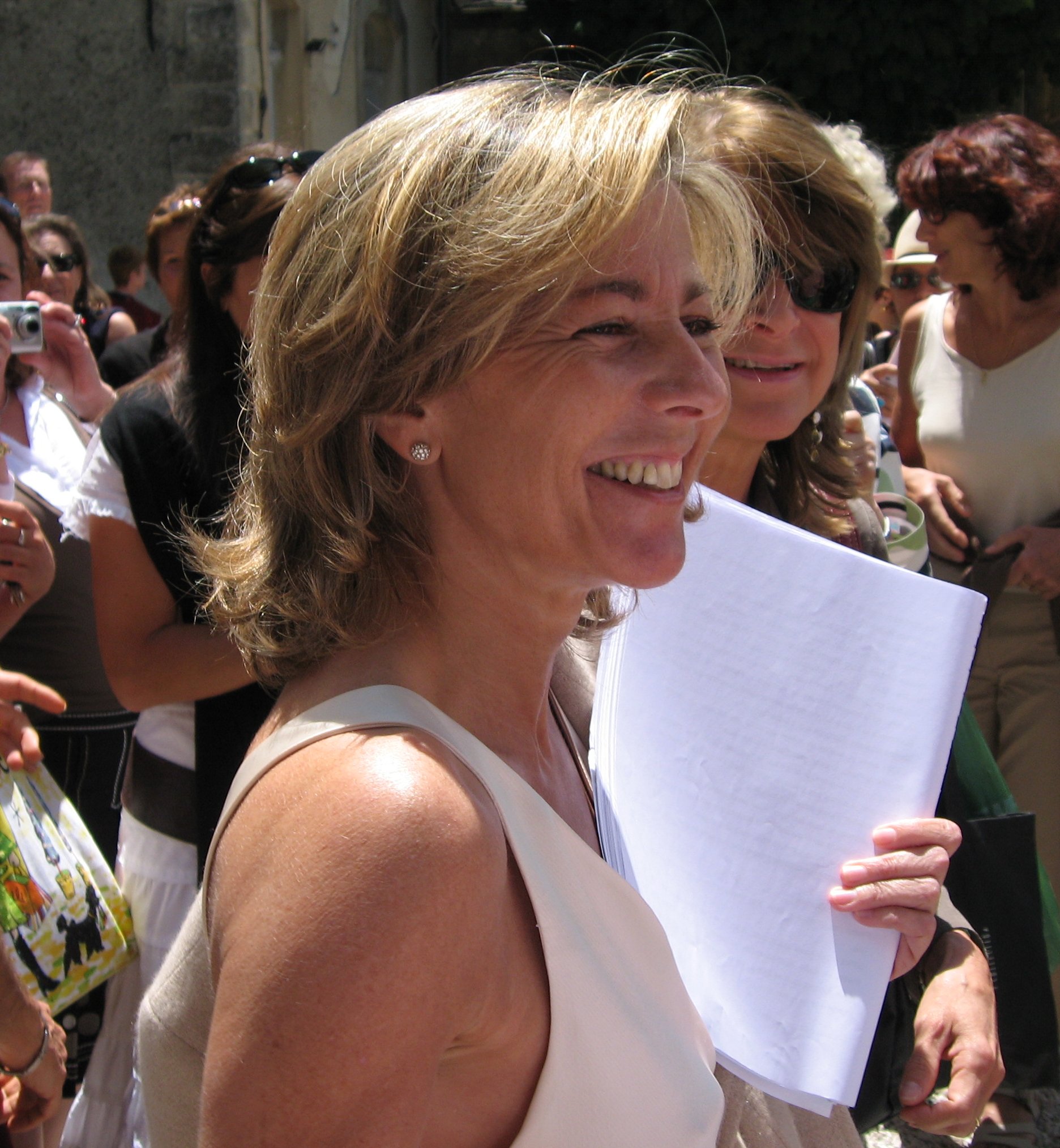
Pierre Brossolette. Photo from Wikimedia Commons
25 Famous Journalists From France
The new Third Republic, was a golden era for French journalism. Newspapers were cheap, energetic, uncensored, omnipresent, and reflected every dimension of political life. The circulation of the daily press combined was only 150,000 in 1860. It reached 1 million in 1870 and 5 million in 1910. In 1914 Paris published 80 daily newspapers.
Le Temps was the serious paper of record. Moderates additionally read Le Figaro. Catholics followed La Croix. Nationalists. Socialists (and after 1920 Communists) took direction from L’Humanité. Much more popular than any of these, and much less political, with nationwide circulation of a million or more came Le Petit Journal, Le Matin, and Le Petit Parisien.
The heavy-handed censorship of the First World War, journalist conscription, and a severe shortage of newsprint all severely limited the size, scope, and quality of all newspapers.
1. François-Nol Babeuf
François-Nol Babeuf was an early political journalist. He was an agitator in Revolutionary France, whose tactical strategies served as a model for left-wing movements of the nineteenth century. His nickname was Gracchus because his proposed agrarian reforms resembled those of the 2nd-century-BC Roman statesman of the same name.
In 1789, he published a pamphlet advocating for tax reform and moved to Paris in the hopes of becoming a journalist. In 1790, he returned to his native Picardy and was arrested and briefly imprisoned.
Following his release, he established the journal Le Correspondant Picard. He advocated for radical agrarian reforms, such as the abolition of feudal dues and land redistribution. During this time, he served as an administrator in the Somme district of Montdidier, but in February 1793, he returned to Paris, where he was arrested and imprisoned again during the Reign of Terror, Maximilien Robespierre’s radical-democratic regime.
2. Jean-Marie Balestre
Jean-Marie Balestre, the president of the Fédération Internationale de Sport Automobile (FIA). FIA is the controlling body of international motor racing. He was one of the most powerful men in global sport for many years.
Balestre always painted a vivid picture of his youth, claiming to have fought in the Spanish Civil War at the age of 16. Following that, he studied law in Paris before working as a journalist for a number of left-wing publications.
When World War II broke out, he described becoming involved in the organization of an anti-German “action group” in Paris. He later served in the resistance, he claimed, and when photographs of Balestre in a German uniform began to circulate in the late 1970s, he attempted but failed to stop their publication. As an explanation, he claimed to be a double agent. Balestre was awarded the Légion d’Honneur in 1968.
3. Victor Noir

Victor Noir on his deathbed. Photo by Gallica. Wikimedia Commons
Victor Noir became a symbol of opposition to the imperial regime after he was shot and killed by Prince Pierre Bonaparte, a cousin of French Emperor Napoleon III. His tomb in Paris’s Père Lachaise Cemetery has become a fertility symbol.
He chose the pen name “Victor Noir” after his mother’s maiden name. He moved to Paris and worked as an apprentice journalist for Henri Rochefort’s newspaper La Marseillaise, which was edited by Paschal Grousset.
4. François Mignet

Henri Mignet. Photo by happy days photos and art. Wikimedia Commons
François-auguste-marie Mignet, a historian and archivist whose clarity of exposition influenced nineteenth-century French historical studies.
Mignet was educated in Avignon and became a professor there in 1815; he returned to Aix for law studies and was admitted to the bar in 1818.
In 1821, the Academy of Inscriptions and Belles-Lettres praised his first work, Essai sur les institutions de Saint Louis, but Mignet left academia to work in political journalism in Paris. He began his career on the staff of the Courrier Français, an anti-monarchy publication, and then co-founded Le National in 1830 with Thiers and Armand Carrel.
This newspaper was a driving force behind the July Revolution, which resulted in the accession of Louis-Philippe as King of France. Mignet abandoned politics and journalism to work as the keeper of the archives at the Foreign Ministry, a position he held until his resignation in 1848.
Mignet was elected to the Academy of Moral and Political Sciences in 1832, and became its permanent secretary in 1837. He was also elected to the French Academy in 1836.
5. Mélissa Theuriau
Mélissa Theuriau is a French journalist and M6 news anchor. She studied journalism and worked as a television news anchor. She is a former French television anchor and co-editor in chief of Zone interdite.
The Daily Express named her the world’s most beautiful news reporter in 2006. She was also voted “TV’s sexiest news anchor” by Maxim readers in the United States. In the French edition of FHM in May 2007, she was voted the most beautiful woman in the world. Paris Match dubbed her “la bombe cathodique” (“the television bombshell”).
6. Pierre Brossolette

Pierre Brossolette. Photo from Wikimedia Commons
During the German occupation of France during World War II, Pierre Brossolette was a key member of the French Resistance. Brossolette, a graduate of the École Normale Supérieure and ardent socialist, was a powerful journalist.
He worked as the state radio network’s chief political commentator under Premier Léon Blum. He was forced from his position as an outspoken critic of appeasement policies and of Premier Édouard Daladier in 1939, but he continued his campaign in the columns of the socialist journal Le Populaire.
7. Caroline Rémy de Guebhard

Caroline Rémy de Guebhard. Photo from Wikimedia Commons
She was a French journalist best known under the pen name Séverine who held anarchist, socialist, communist, and feminist views. Caroline Rémy became involved with Jules Vallès’ socialist publication, Cri du Peuple, around 1880.
Due to his failing health, Vallès eventually relinquished control of the newspaper to her. She befriended journalist and feminist Marguerite Durand as she became more militant, but she left the newspaper in 1888 after a disagreement with Marxist Jules Guesde.
Caroline Rémy continued to write for other publications, promoting women’s emancipation and denouncing social injustices such as the Dreyfus affair. She began writing for Durand’s feminist daily newspaper La Fronde in 1897.
8. Daniel Schneidermann

French journalist Daniel Schneidermann in 2009. Photo by Anthony Morel. Wikimedia Commons
Daniel Schneidermann is a French journalist who specializes in television media analysis. He is primarily active in weekly columns, previously in Le Monde and now in Libération, as well as on a video channel called Arrêt sur images.
Schneidermann wrote weekly columns for Le Monde until October 2003, when he was fired following the publication of his book The Media Nightmare (Le Cauchemar médiatique), in which he criticized Le Monde management for failing to respond to criticism directed at them by the authors of The Dark Side of Le Monde.
He became a media columnist for the daily newspaper Libération, whose publisher, Serge July, he had slammed in his book Where Are the Cameras? (Où sont les caméras?) in 1989; July, in particular, chastised Schneidermann for having ”changed sides.”
9. Remi Ochlik
Remi Ochlik, an award-winning French photojournalist, was only 29 years old when he was killed on Feb. 22 in Homs, Syria, when government forces shelled a building where a growing number of foreign journalists were covering the battle. The horror in Syria struck Ochlik just as he was starting his career.
Ochlik won the Francois Chalais Award for Young Reporters in 2004 after traveling to Haiti and photographing the fall of President Jean-Bertrand Aristide. He founded his own agency, IP3 Press, which specialized in combat photography.
In 2008, he covered the conflict in the Democratic Republic of the Congo, and in 2010, he returned to Haiti to cover a cholera outbreak. In 2011, Ochlik covered the Arab Spring in Tunisia, Egypt, and Libya, and his work in Libya earned him first place in the World Press Photo contest’s General News category. According to one of the World Press judges, his submission told a complete story.
10. Antoine de Caunes
Antoine de Caunes. Photo by Le grand Cricri. Wikimedia Commons
Antoine de Caunes is a French television host, actor, writer, and film director who was born on December 1, 1953. He began his career as Paul Persavon, writing theme songs for Antenne 2 cartoons such as Cobra and Space Sheriff Gavan.
De Caunes began producing an English-language version of his French music show Rapido for Janet Street-youth Porter’s and entertainment programming strand DEF II in 1988. He then went on to create the long-running magazine show Eurotrash for Channel 4.
He hosted the daily evening show Le Grand Journal on Canal from 2013 to 2015. Not only that, but he was a voice actor in the Aardman Animation TV show Rex the Runt. He has long been an advocate for AIDS awareness, leading the organization Solidarité sida (AIDS Solidarity).
11. Audrey Pulvar

Audrey Pulvar during an interview. Photo by Lionel Allorge. Wikimedia Commons
Audrey Pulvar is a French journalist, television and radio host, and politician. From 2005 to 2009, Pulvar was a newsreader on France 3’s 19/20. From 2011 to 2012. He was a commentator on Laurent Ruquier’s show On n’est pas couché on France 2, and in 2013, he joined the Canal+ Television Group and its channel D8.
Audrey Pulvar moved between her island and mainland France when she was 14 years old. Although she received the majority of her education in mainland France, she received her secondary school diploma in the Caribbean before returning to mainland France (Rouen) and earning a graduate degree in Economics (University of Rouen).
She continued her education at the École supérieure de journalisme de Paris (ESJ), where she graduated in 1994. She then became a member of Édouard Balladur’s presidential campaign team.
12. Benjamin Castaldi
Benjamin Castaldi is a television host, columnist, radio host, and producer from France. He was the former host of Secret Story, a spinoff of Loft Story, which he also hosted. Benjamin Castaldi grew up in an artistic family, the son of actress and writer Catherine Allégret and actor Jean-Pierre Castaldi.
He grew up with his grandmother, actress Simone Signoret, grandfather, director Yves Allégret, and his mother’s adoptive father, actor and singer Yves Montand. Clémentine Vaudaux is his maternal half-sister, and Giovanni and Paola are his paternal half-siblings. He is of Italian and Polish-Jewish ancestry.
13. Bernard Pivot

Bernard Pivot. Photo by Georges Seguin. Wikimedia Commons
Bernard Pivot is a French journalist, interviewer, and cultural television host. From 2014 to 2020, he served as chairman of the Académie Goncourt. Following an internship at Le Progrès in Lyon, he studied economic journalism for a year before joining the Figaro Littéraire in 1958.
In 1970, he hosted a daily radio show that was often political in nature and was not well received by President Georges Pompidou. Pivot joined Le Figaro after the Figaro Littéraire closed in 1971. After a disagreement with Jean d’Ormesson, he left in 1974.
Jean-Jacques Servan-Schreiber approached him about starting a new project, which resulted in the creation of a new magazine, Lire, a year later.
Meanwhile, in April 1973, he began hosting a television show called Ouvrez les Guillemets on France’s first television network. The ORTF was dissolved in 1974, and Pivot began his Apostrophes program. Apostrophes was first aired.
14. Claire Chazal

Claire Chazal. Photo from Wikimedia Commons
Claire Chazal is a French journalist, romance author, and former national television news director. She had been the weekend news anchor at TF1 since 1991, and her final broadcast was on September 13, 2015; Anne-Claire Coudray, who had frequently filled in for her when she was absent, was announced as her replacement.
Between 2010 and 2015, she was also the host of Reportage at 1.30pm, following the news. She used to host Je/nous de Claire, a talk show on Pink TV, a gay television channel she helped launch in 2004.
15. David Pujadas

David Pujadas. Photo by Coccico2345. Wikimedia Commons
David Pujadas was an anchorman on France 2’s weeknight newscast, Le Journal de 20 Heures, and a news presenter for TF1’s LCI daily news programme. He has been anchoring these newscasts since September 2001, when he took over for Claude Sérillon on orders from the new France 2 news director, Olivier Mazerolle.
Pujadas was fired in May 2017 and delivered his final news report on June 8, 2017.
Pujadas’ newscasts were rebroadcast on TV5 Monde in Canada on weeknights at 18:30 North American Eastern Time and on SBS in Australia on weekdays at 08:40.
16. Christine Ockrent

Christine Ockrent. Photo by Olivier Ezratty. Wikimedia Commons
Christine Ockrent is a columnist and writer based in Paris who has written for the Washington Post, Prospect, Gazeta Wyborcza, l’Espresso, and other European publications. Christine is also the producer and host of a weekly foreign affairs radio program on France Culture, as well as a frequent contributor to the BBC, CNN, and other media outlets.
Christine was previously the COO of the French Radio and TV World Service (France 24 and RFI), as well as the editor in chief of the weekly news magazine L’Express.
Much of her career has been spent in television, both as a documentary producer and as an anchor of the evening news, where she established herself as the first female presenter and editor. She has received several French and international honors for her work in television journalism.
17. Élise Lucet
Élise Lucet is a journalist and television host from France. She has been dubbed France’s “incorruptible journalist” for her investigative journalism work on shows such as Pièces à Conviction, Cash Investigation, and Envoyé spécial. She was made a Knight of the Legion of Honour in 2008.
Lucet and her team’s work for Cash Investigation earned them around twenty international awards, including a Pulitzer Prize in 2017 for their investigation into the Panama Papers.
From 2000 to 2011, Lucet hosted Pièces à Conviction as a writer and television producer. She left 19/20 in 2005 to host 13 heures le journal on France 2. She began hosting Cash Investigation, an investigative television show, in 2012, and she has also hosted Envoyé spécial since 2016.
18. Frédéric Mitterrand

Frédéric Mitterrand. Photo by MEDEF. Wikimedia Commons
Frédéric Mitterrand is a French politician who served as Minister of Culture and Communication under President Nicolas Sarkozy from 2009 to 2012. He has worked as an actor, screenwriter, television presenter, writer, producer, and director throughout his career.
Mitterrand was appointed to the French government as Minister of Culture and Communications on June 23, 2009, and served until May 2012.
Mitterrand writes a monthly column for Têtu and is openly bisexual.
19. Ginie Van De Noort
Ginie Van De Noort was born in Compiègne and grew up there. She studied journalism at CELSA and the Institut Français de Presse. She moved to Paris in 1998 and worked for three years at RTL French radio station.
She was discovered by a modeling agency in 2000 and walked the runways for the most famous designers. As a result, she can frequently be seen in La Grande Emission on Comedy! channel and On a tout essayé on France 2 channel. Vincent Bolloré gave her a daily prime time show Avant tout le monde when Direct 8 launched in 2005.
She hosted it every day for three years, along with a fashion show called Fashion 8. Vincent Bolloré asked her to work for his daily Direct Soir when it launched in June 2006. She currently works for print magazines such as L’Équipe, ELLE, L’Optimum, and A Nous Paris.
20. Harry Roselmack
Harry Roselmack is a Martiniquan-born French radio and television journalist. Harry Roselmack earned degrees in both history and journalism (DUT). During this time, he began working for a local radio station. He then contributed to the regional newspaper La Nouvelle République du Centre-Ouest with some sports articles. Roselmack began her career with Radio France (France Bleu, France Info) in 2000 before joining Canal+.
TF1 appointed him as the official summer replacement for Patrick Poivre d’Arvor, the evening news anchorman, in 2006. This decision resulted in a number of transfers between the major networks. Harry Roselmack made his TF1 debut on July 17, 2006, becoming the channel’s first black evening news anchorman and garnering up to 44.8% of the audience (over 8 million viewers).
21. Jacques Martin
Jacques Martin was a French comics artist and creator. He was one of Tintin magazine’s classic artists, alongside Edgar P. Jacobs and Hergé, with whom he worked for many years. He is best known for his Alix series. He was born in the city of Strasbourg. After studying engineering as a young man, Jacques Martin began drawing his first comic stories in 1942. Following the war’s end in 1946, he traveled through Belgium in search of an editor for his work.
Soon after, he met Georges Remi (aka Hergé), with whom he worked on several albums of The Adventures of Tintin (most notably Tintin in Tibet and The Red Sea Sharks) while also working on his own. He learned about the ligne claire style from Hergé and began to use it in his own work under Hergé’s supervision. Along with Hergé, Edgar P. Jacobs, Bob de Moor, and Willy Vandersteen, he was later regarded as one of the great five of the ligne claire style.
In 1948, he created Alix, his most famous series, which was published in the magazine Tintin and featured adventures set in Roman antiquity. This historic comic quickly became one of the genre’s most popular and was published in a number of countries around the world. At the 1978 Angoulême International Comics Festival, the story Le spectre de Carthage won the award for best French realistic comic book.
22. Jean-Marie Pelt

Jean-Marie Pelt. Photo by Lamiot. Wikimedia Commons
Jean-Marie Pelt was a French biologist, botanist, and pharmacist who studied biology and pharmacy. He taught medicinal plants and traditional pharmacopeia at the University of Lorraine and is the author of numerous scientific articles and books on pharmaceutical plants, plant biology, and urban ecology.
Pelt was well-known in France as the creator of several plant biology and ecology television series and radio broadcasts. He’s been dubbed the Konrad Lorenz of the vegetable world.
23. Laurent Delahousse

Laurent Delahousse. Photo by N2lepine. Wikimedia Commons
Laurent Delahousse is a French journalist, host, producer, and television director who was born on August 30, 1969 in Croix (Nord). He began his journalism career in 1994 as a trainee in the political service of the radio station RTL. In 1996, he joined the LCI continuous news channel; a journalist in political and foreign service, he also presented newspapers and a weekly magazine, Photo Hebdo, until 1998.
On January 12, 1999, Laurent Delahousse joins M6 as editor-in-chief and presenter of the magazine De quel droit? From March 14, 2000 to August 29, 2001, the magazine Jour J was published. Since 2000, he has hosted Secrets d’actualité, a magazine of investigative reports that airs in the second half of the evening on M6. In parallel with the end of the season in January 2006, he hosts the program Générations Europe 1 on Europe 1 every Monday from 11 p.m. to midnight.
24. Laurent Ruquier

Laurent Ruquier. Photo by Starus. Wikimedia Commons
Laurent Hugues Emmanuel Ruquier is a French television host, radio host, and comedian. He is also a lyricist, writer, columnist, and impresario; since 2011, he has served as co-owner and general manager of Théâtre Antoine-Simone Berriau in Paris. From 2006 to 2020, he was best known for hosting the On n’est pas couché show on France 2.
Between 1983 and 1986, he debuted on Le Havre’s local radio stations. Encouraged by his aunt, he contacted radio host and journalist Jacques Mailhot, then host of Ear in the Area on France Inter, who was captivated by his texts, in 1987. Laurent Ruquier got his first taste of television thanks to Jacques Mailhot’s three-month stint on FR3 Île-de-“Paris France’s Kiosk,” and he was given the opportunity to perform in Paris.
25. Jean-Dominique Bauby
Jean-Dominique Bauby (23 April 1952 – 9 March 1997) was a French journalist, author, and the editor of the French fashion magazine Elle.
The Diving Bell and the Butterfly (original French title: Le Scaphandre et le Papillon) is Jean-Dominique Bauby’s memoir. It tells the story of his life before and after a massive stroke, which left him with locked-in syndrome.
The book’s French edition was released on March 7, 1997. The first 25,000 copies were sold on the day of publication, and 150,000 were sold within a week. It went on to become Europe’s number one best-seller. Its total sales are now in the millions of dollars.
Planning a trip to Paris ? Get ready !
These are Amazon’s best-selling travel products that you may need for coming to Paris.
Bookstore
- The best travel book : Rick Steves – Paris 2023 – Learn more here
- Fodor’s Paris 2024 – Learn more here
Travel Gear
- Venture Pal Lightweight Backpack – Learn more here
- Samsonite Winfield 2 28″ Luggage – Learn more here
- Swig Savvy’s Stainless Steel Insulated Water Bottle – Learn more here
Check Amazon’s best-seller list for the most popular travel accessories. We sometimes read this list just to find out what new travel products people are buying.









